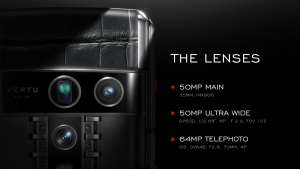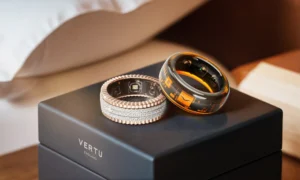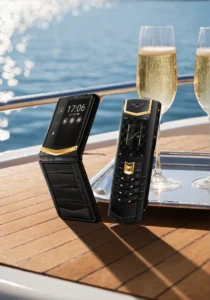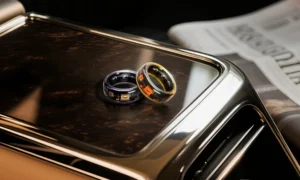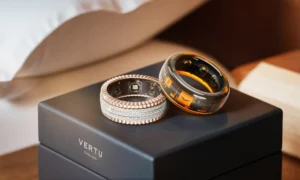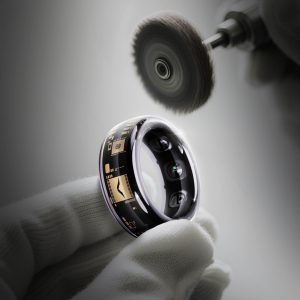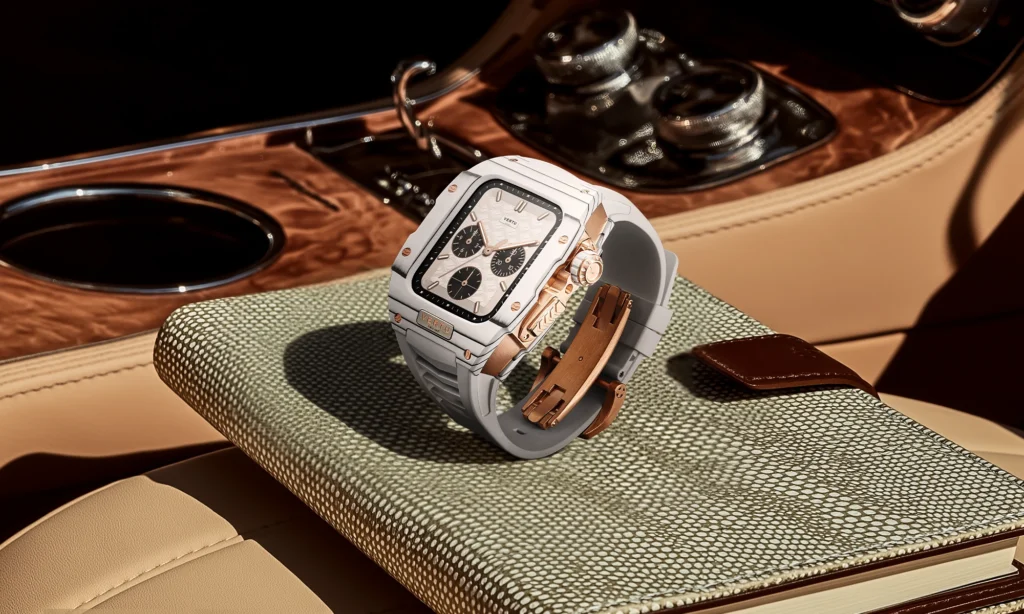
Tired of guessing about your health? Want actionable insights right on your wrist?
What You'll Learn:
- What truly makes a smartwatch a “wellness” device in 2025.
- The essential health metrics beyond basic step counting.
- A detailed comparison of the top 5 wellness smartwatches for the year.
- How to effectively use your smartwatch data for tangible health improvements.
- The future trends shaping the wearable health technology market.
Understanding the ‘Smartwatch For Wellness' Revolution
The definition of a smartwatch has evolved dramatically. No longer just a notification hub or a basic fitness tracker, modern smartwatches are becoming sophisticated personal health companions. In 2025, a wellness smartwatch is defined by its ability to go beyond simple activity tracking and provide deeper, more actionable insights into your overall well-being.
What Defines a Wellness Smartwatch in 2025?
A true wellness smartwatch in 2025 integrates advanced sensors with intelligent algorithms to monitor a comprehensive range of health indicators. This includes not just heart rate and steps, but also:
- Blood oxygen saturation (SpO2)
- Electrocardiogram (ECG)
- Skin temperature variations
- Stress levels (often through heart rate variability – HRV)
- Sleep quality and stages
- Respiration rate
- Blood pressure monitoring (emerging)
These devices are designed to provide a holistic view of your health, helping you understand your body's signals and make informed lifestyle choices. For a deeper dive into the technical aspects of wearable sensors, you can explore resources on developer.mozilla.org.
Beyond Fitness: Key Health Metrics You Need
While tracking your daily steps and calories burned is valuable, a wellness smartwatch should offer more. Key health metrics that are becoming standard include:
- Heart Health: Continuous heart rate monitoring, resting heart rate trends, and alerts for unusually high or low heart rates. ECG capabilities can detect potential signs of atrial fibrillation, a significant health concern.
- Sleep Health: Detailed analysis of sleep stages (light, deep, REM), duration, and disruptions. This data is crucial for understanding energy levels and overall recovery.
- Stress Management: Monitoring HRV and respiration rate can provide insights into your body's stress response. Many watches offer guided breathing exercises based on this data.
- Respiratory Health: SpO2 monitoring can indicate how well your body is absorbing oxygen, a vital sign for general health and especially important for those with respiratory conditions.
The Importance of FDA Clearance for Health Claims
As smartwatches venture into more sensitive health monitoring, FDA clearance becomes paramount. This clearance signifies that a device's health claims have been rigorously reviewed and validated by the U.S. Food and Drug Administration. For features like ECG or blood oxygen monitoring, official clearance lends credibility and assures users that the data is reliable for health-related decisions. It's essential to look for devices that have achieved this for the specific health features you rely on. You can find more information on medical device regulation at fda.gov.
Choosing Your Perfect Wellness Companion: Top 5 Models for 2025
Selecting the right wellness smartwatch depends on your individual needs and priorities. Here's a breakdown of five top contenders for 2025, each excelling in different areas.
Model 1: Apple Watch Series 9 – The All-Rounder
The Apple Watch Series 9 continues its reign as a top-tier all-rounder. It offers an exceptional user experience, a vast app ecosystem, and robust health tracking.
- Key Features: Advanced heart rate sensor, ECG app, blood oxygen sensor, temperature sensing, fall detection, crash detection, comprehensive sleep tracking.
- Pros: Seamless integration with the Apple ecosystem, intuitive interface, extensive app support, strong community support.
- Cons: Requires an iPhone, can be pricey.
Model 2: Garmin Venu 3 – Fitness Focused Powerhouse
Garmin is renowned for its GPS accuracy and robust fitness tracking, and the Venu 3 doesn't disappoint. It's ideal for serious athletes and fitness enthusiasts who want detailed performance metrics.
- Key Features: Advanced GPS, extensive sport profiles, Body Battery™ energy monitoring, sleep score, pulse oximeter, ECG app.
- Pros: Unmatched sports tracking accuracy, long battery life, comprehensive health metrics, excellent for outdoor activities.
- Cons: Interface can be less intuitive for beginners, app ecosystem is smaller than Apple's.
Model 3: Fitbit Sense 2 – Sleep & Stress Management Expert
For those prioritizing sleep quality and stress management, the Fitbit Sense 2 is a strong contender. Its focus on mindfulness and stress-reducing features makes it a unique wellness tool.
- Key Features: cEDA sensor for stress detection, ECG app, skin temperature sensor, detailed sleep tracking, SpO2 monitoring, mindfulness tools.
- Pros: Excellent sleep analysis, effective stress management features, user-friendly app, good battery life.
- Cons: Less emphasis on advanced sports metrics compared to Garmin.
Model 4: Samsung Galaxy Watch 6 – Budget-Friendly Wellness
The Samsung Galaxy Watch 6 offers a compelling package of features at a more accessible price point, especially for Android users.
- Key Features: ECG app, blood pressure monitoring (region-dependent), body composition analysis, sleep tracking, SpO2.
- Pros: Good value for money, solid health tracking suite, sleek design, good integration with Android devices.
- Cons: Battery life can be average, requires a Samsung phone for some features.
Model 5: Withings ScanWatch 2 – Advanced Health Monitoring
The Withings ScanWatch 2 stands out with its medical-grade health monitoring capabilities, presented in a classic analog watch design.
- Key Features: ECG, SpO2, temperature sensing, advanced sleep tracking, activity tracking, long battery life.
- Pros: Medical-grade accuracy for ECG and SpO2, elegant design, exceptional battery life, focus on proactive health.
- Cons: Limited smartwatch features (notifications, apps) compared to others, higher price point.
Here's a quick comparison table:
| Feature | Apple Watch Series 9 | Garmin Venu 3 | Fitbit Sense 2 | Samsung Galaxy Watch 6 | Withings ScanWatch 2 |
|---|---|---|---|---|---|
| ECG App | Yes | Yes | Yes | Yes | Yes |
| SpO2 Sensor | Yes | Yes | Yes | Yes | Yes |
| Sleep Tracking | Advanced | Advanced | Advanced | Advanced | Advanced |
| Stress Tracking | Via HRV | Via HRV | cEDA Sensor | Via HRV | Via HRV |
| FDA Clearance | ECG, Fall Detection | ECG, SpO2 | ECG, SpO2 | ECG, BP (Regional) | ECG, SpO2 |
| Battery Life | ~18 hours | Up to 10 days | Up to 6 days | ~1.5 days | Up to 30 days |
Maximizing Your Smartwatch Data for Real Health Gains
Simply collecting data is only half the battle. The real value of a wellness smartwatch lies in how you interpret and act upon the information it provides.
Interpreting Your Data: From Numbers to Insights
Your smartwatch generates a stream of data. To make it useful, learn to look for trends and patterns.
- Heart Rate: Is your resting heart rate consistently trending down? This is a good sign of improved cardiovascular fitness. Are you noticing frequent spikes during stressful periods?
- Sleep: Are you consistently getting enough deep sleep? If not, consider adjusting your bedtime routine.
- Activity: Are you meeting your step goals? Are your workout intensity levels appropriate for your goals?
“Data without context is just noise. The key is to use your smartwatch to understand your body's unique signals and how your lifestyle choices impact them.” – Dr. Anya Sharma, Digital Health Researcher.
For anyone interested in the underlying principles of data interpretation, exploring resources on coursera.org can be beneficial.
Setting Realistic Wellness Goals with Your Watch
Use your smartwatch data to set SMART goals: Specific, Measurable, Achievable, Relevant, and Time-bound.
- Instead of: “I want to be healthier.”
- Try: “I will aim to get an average of 7 hours of sleep per night for the next month, as tracked by my smartwatch.”
- Or: “I will increase my average daily steps by 1,000 steps per week for the next two weeks, aiming for 10,000 steps daily.”
Seamless Integration: Connecting Your Watch to Your Digital Health Ecosystem
Many wellness smartwatches can sync with other health apps and platforms. This creates a more comprehensive picture of your health.
- Nutrition Apps: Track your food intake alongside your activity and sleep.
- Mindfulness Apps: Complement your smartwatch's stress tracking with guided meditations.
- Electronic Health Records (EHRs): Some platforms allow you to export data that can be shared with your doctor. Learn more about health data standards at w3.org.
Leveraging Smartwatch Data for Doctor Consultations
Your smartwatch can be a powerful tool during doctor visits.
- Prepare: Note down any significant trends or concerning readings.
- Share: If your watch has FDA-cleared features like ECG, consider exporting the data to share with your physician. This can provide valuable objective information beyond what you might remember.
- Discuss: Ask your doctor about the relevance of your smartwatch data to your specific health conditions.
The US Market & Future of Wellness Smartwatches
The adoption of wellness smartwatches in the US is booming, driven by increasing health consciousness and technological advancements.
US Consumer Demand: Why Wellness Smartwatches Are Booming
Consumers are increasingly proactive about their health. They seek tools that offer convenience, personalized insights, and empower them to take control of their well-being. The ability to monitor chronic conditions, track fitness progress, and gain a deeper understanding of daily habits makes these devices highly attractive. According to statista.com, the wearable device market in the US has seen significant growth.
Projected Market Growth for Health Wearables
The future of health wearables is exceptionally bright. Experts predict continued strong growth, fueled by:
- Advancements in sensor technology: Enabling more accurate and diverse health monitoring.
- AI and machine learning: Providing more sophisticated data analysis and personalized recommendations.
- Integration with telehealth: Facilitating remote patient monitoring and virtual care.
- Focus on preventative health: Shifting from reactive treatment to proactive wellness.
The global market for wearable devices is projected to continue its upward trajectory, with health and wellness applications being a primary driver. You can find market research data on forrester.com.
What's Next? Innovations on the Horizon
The innovation pipeline for wellness smartwatches is robust. We can expect to see:
- Non-invasive blood glucose monitoring: A holy grail for diabetes management.
- Advanced hydration and electrolyte monitoring.
- More sophisticated mental health tracking and intervention tools.
- Enhanced integration with smart home health devices.
- Greater personalization through AI-driven insights.
These advancements promise to make our wearable companions even more indispensable in our daily health journeys.
Navigating Challenges and Ensuring Optimal Performance
While incredibly powerful, wellness smartwatches are not without their challenges. Understanding these can help you get the most out of your device.
Troubleshooting Common Wellness Features
- Inaccurate Heart Rate: Ensure the watch is snug on your wrist, clean, and that you're not over-exerting it during intense workouts if it's not designed for that specific activity.
- Sleep Tracking Issues: Make sure you wear the watch consistently to bed. Some watches may struggle with very short naps or irregular sleep patterns.
- Connectivity Problems: Regularly update your watch and its companion app. Ensure Bluetooth is enabled on your phone. For deeper troubleshooting, resources like stackoverflow.com can offer solutions for common software issues.
Best Practices for Battery Optimization
Long battery life is crucial for continuous health monitoring.
- Limit Always-On Display: This feature consumes significant power.
- Reduce Notification Frequency: Only enable notifications for essential apps.
- Disable Unused Sensors: If you don't need continuous SpO2 monitoring, turn it off.
- Optimize GPS Usage: For workouts, use the most efficient GPS setting available.
Understanding Smartwatch Health Data Limitations
It's vital to remember that smartwatches are consumer-grade devices, not medical diagnostic tools (unless specifically FDA-cleared for that purpose).
- Data is Informational: Use the data as a guide, not a definitive diagnosis.
- Consult Professionals: Always consult a healthcare provider for any health concerns.
- Accuracy Varies: Sensor accuracy can be influenced by factors like skin tone, movement, and environmental conditions. You can find information on sensor accuracy standards at iso.org.
FAQ (Frequently Asked Questions)
Q: Can my smartwatch replace my doctor's advice?
A: No, absolutely not. Smartwatches provide valuable data and insights that can complement your healthcare, but they are not a substitute for professional medical diagnosis and treatment. Always consult with a qualified healthcare provider for any health concerns.
Q: How accurate are smartwatch ECG readings?
A: For FDA-cleared smartwatches, ECG readings can be quite accurate for detecting certain arrhythmias like atrial fibrillation. However, they are not designed to detect all heart conditions. Your doctor will interpret these readings in the context of your overall health. For more on ECG technology, you can explore nih.gov.
Q: My smartwatch says I'm stressed. What should I do?
A: If your smartwatch indicates high stress levels, it's a signal to pay attention. Consider using the watch's built-in mindfulness features like guided breathing exercises. Also, reflect on potential stressors in your life and explore stress-management techniques such as exercise, meditation, or spending time in nature.
Q: Is it safe to wear my smartwatch while sleeping?
A: Yes, it is generally safe and recommended for most wellness smartwatches to be worn during sleep. This allows for comprehensive sleep tracking, which is a crucial aspect of overall health monitoring. Ensure the watch is comfortable and not too tight.
Q: What is SpO2 and why is it important?
A: SpO2 refers to peripheral oxygen saturation, which measures the percentage of oxygen in your blood. It's an important indicator of respiratory health. Low SpO2 levels can signal underlying issues. Many wellness smartwatches track this to provide insights into your oxygen absorption.
Conclusion
Wellness smartwatches have evolved into indispensable tools for proactive health management. By understanding what defines a true wellness device, carefully selecting a model that fits your needs, and actively interpreting the data, you can unlock significant improvements in your overall well-being. Embrace the power of these wearable companions to make informed decisions and live a healthier, more balanced life.
Ready to take the next step in your wellness journey? Explore the top models we've discussed and find the perfect fit for you!

